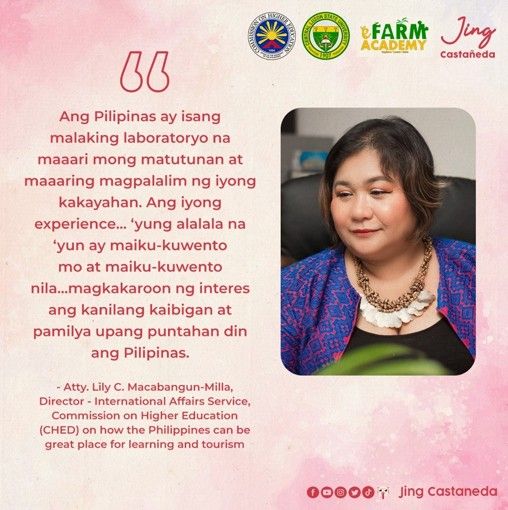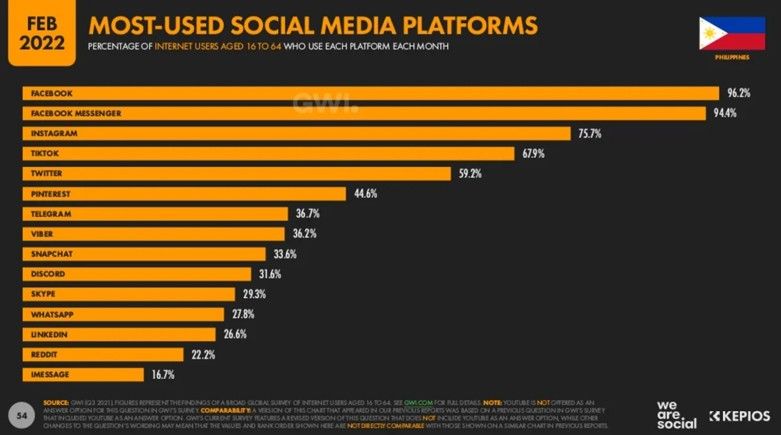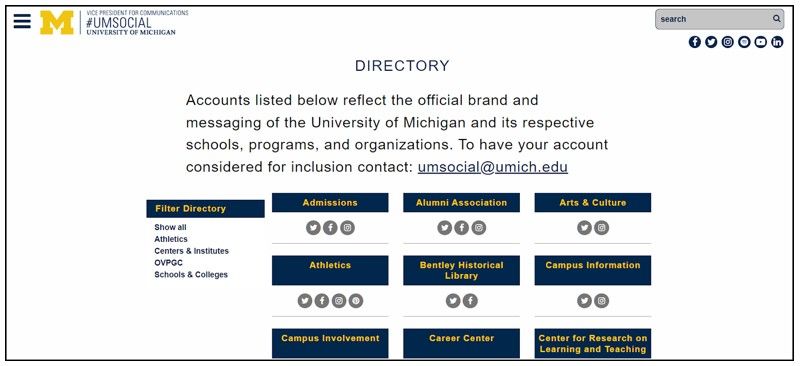Digital transformation: Reimagining education through social media

Since the dawn of time, communication has grown and developed with humankind. From prehistoric cave drawings and pictographs, we now have centuries-old spoken languages and writing systems that are understood around the globe. In turn, these have given rise to media that we now classify as traditional or new.
But it’s interesting to note that these classifications aren’t static. As we keep pushing the boundaries of technological innovations, what was once new will eventually become traditional. For instance, by creating the movable-type printing press in the 1440s, Gutenberg revolutionized the mass production of the printed page. But today, print is considered traditional. The same is true for radio and television, both of which are now regarded as mainstream but were once hailed as groundbreaking technology in their early days.
Meanwhile, as internet connectivity continues to make the Earth a global village, digital media — particularly social media — has become the current face of new media.
Traditional and new media
As we all know, traditional media is sometimes called tri-media because it primarily consists of print publications (broadsheets, tabloids, magazines), radio, and television.
It’s regarded as a more reliable source of information because the content is produced by qualified media practitioners who have undergone rigorous professional training. There are also built-in policies, procedures, and work processes in place to confirm facts, figures, and stories before they come out. Journalistic integrity is further reinforced by the regulatory bodies that govern its member practitioners and bind them to stringent ethical, professional, and moral codes.
New media is generally more accessible. Its content is almost always free and easy to obtain so long as you have an internet-ready device. Live streaming now enables real-time information dissemination while comments and replies encourage extended discourse.
But these advantages can come at the expense of quality, accuracy, and reliability. Unlike traditional media, digital content can be made by anyone who has the right tools. Thus, in the absence of proper education and the expertise of professional editors, digital content may not only be lackluster, it may also be riddled with grammatical and factual errors. The latter is especially true because the internet is fertile ground for misinformation, which is accidental, and disinformation, which is deliberate and often motivated by more sinister objectives.

Whether traditional or new, professional or personal, one of the core functions of communication is storytelling. This is particularly true in the context of branding and marketing communications. A good story can get people to react, but a powerful story — a good story well told — can get them to act.
Promoting HEIs: The power of stories
Powerful stories can activate the senses. They can fuel curiosity. They can inspire the desire to learn. Philippine higher education institutions (HEIs) are full of stories that can do all of that, says Atty. Lily C. Macabangun-Milla, Interim Deputy Executive Director and Director for International Affairs ng CHED. She adds that, historically, our universities haven’t seen themselves as important actors in promoting the strengths of Philippine higher education (HE) to the rest of the world.
“Marami silang pwedeng ipagmalaki (They have many things to be proud of),” but she laments that few seem to know about these milestones, not just around the world but even here at home. “It’s just a matter of giving our SUCs a platform and an opportunity to shine. Then they’ll become more mindful of the successes and breakthroughs they should share, not for the sake of bragging but so that others can learn from them.”
Dr. J Prospero “Popoy” E. De Vera III, Chairperson of the Commission on Higher Education (CHED) adds, there’s a lot to be gained by changing this mindset, especially to serve CHED’s mandate to promote Philippine state colleges and universities (SUCs) as study destinations for foreign students. He says, by allowing the success stories of SUCs to speak for themselves, they can attract more foreign enrollees and also enhance their expertise through the constant exchange of knowledge with other institutions.
Digital transformation: The next frontier for HEIs
Atty. Lily says there are over 2,000 HEIs in the country, all of which must step up their digital transformation in order to be more competitive in the global arena.
As defined by Salesforce, developer of the world’s top customer relations management (CRM) software, digital transformation is “the process of using digital technologies to create new — or modify existing — business processes, culture, and customer experiences to meet changing business and market requirements.”
For HEIs, this means more than just reimagining the business side of their operations. It also entails adapting their curriculum, vision and mission, and even their teaching methods to meet the demands of the digital age and, more importantly, to take advantage of the many opportunities that this new frontier presents.
It’s a wired world
HEIs need to stake their claim in the digital landscape because it’s where people are at. According to the Digital 2022 Global Overview Report, a report published by We Are Social and Hootsuite, “most of the connected world continues to grow faster than it did before the pandemic.” Because of the internet, we now live in the era of the netizen, international cybercitizens who, according to the report, spend an average of seven (7) hours or nearly 44% of their waking hours online.
But that global average is well below Philippine online habits. We’re said to clock in around 10 hours and 27 minutes per day online, a staggering 65% of our daily waking hours.
Digital natives and where to find them
The median age in the Philippines is 26.3 years old. With such a young population, this places nearly 60% of Filipinos in the classification of digital natives or those for whom the technology is second nature. Having been born and raised in the information age, for most of them, the mobile phone isn’t just a device, it’s a lifeline. This could very well explain why we reportedly have more cellular mobile connections (157M) than people (111M), indicating that many Filipinos have more than one mobile phone in active use.
And where do digital natives converge? According to the Digital 2022 Report, they’re on social media. As of January 2022, there were 92.05 million social media users in the Philippines, a 3.4% increase from the previous year. Though other platforms like TikTok and Instagram registered growth, Facebook remained the top social media site for Filipinos with close to 84M users.

Tapping into the power of digital media
Given the figures above, it makes sense for HEIs to build a stronger presence online in order to reach foreign prospects as well as maintain stronger ties with their local constituents.
How? Most HEIs already have a website and some sort of social media presence. However, they tend to be rudimentary and underutilized. But they can be improved to give HEIs the opportunity to share stories and promote their successes with just a few taps and clicks.
Universities around the world are already using their websites as searchable repositories of academic resources. They also function as tools for student recruitment. However, not all websites are easy to navigate. And because websites are typically unidirectional by nature, very few can offer users an interactive experience.
But social media can be used to complement and bolster the reach of the school’s website. By building a strong and responsive social media presence across different platforms, HEIs will be able to engage in an active dialogue with their different audiences and stakeholders, including current students, prospective enrollees, parents, faculty, alumni, partner institutions, the local community, and even the general public.
For added reach, it’s also beneficial to have parallel accounts across platforms. This will allow HEIs to cross-post the same content to reach users on Facebook, Twitter, LinkedIn, and other social media platforms.
But maintaining official social media accounts is not a casual job. A content plan is also necessary to promote the school, its values, and its stories. And, of course, competent social media managers should be at the helm. But they can encourage the participation of the students to help lighten the load. They just have to make sure that these born and bred digital natives receive the proper guidance from school-appointed faculty or staff members.
For greater interaction, HEIs can manage multiple accounts to reach their different niche audiences. The University of Michigan is a good example of an HEI with over a thousand social media accounts classified according to 66 categories, ranging from academics and athletics to those concerning community life and recreation.

Though that may seem daunting, Chair Popoy and Atty. Lily believe that our SUCs are well placed to make their presence felt via social media. That’s because they already have the innate capabilities for research that is necessary to produce data-driven instructional and promotional materials that will excite learners and attract visitors to their respective localities.
All they need is to get out of their comfort zones and embrace their role as communicators online and off. CHED’s challenge for SUCs is twofold: 1) to accelerate their digital transformation and 2) to turn their successes and best practices into compelling stories, whether written or visual, for different social media platforms.
In so doing, our SUCs can stand toe to toe with other HEIs around the world to attract foreign students, instill greater pride in our homegrown learners, and perhaps attract a grant or two along the way. CHED is confident that once our schools take their rightful place in the digital landscape, the possibilities for greater success are endless.
--
Watch Pamilya Talk on Facebook, YouTube and Kumu (@JingCastaneda – 12:00 noon – 1:00 p.m. Monday & Wednesday). You can also follow my social media accounts: Instagram, Facebook, YouTube, Tiktok, Twitter and Kumu. Please share your stories or suggest topics at [email protected].
- Latest


























 Partner
Partner




